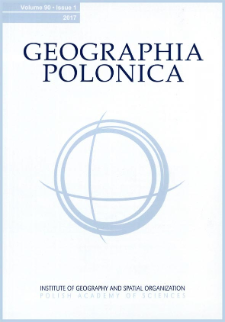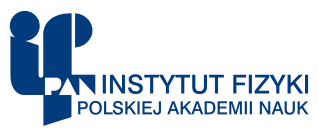- Wyszukaj w całym Repozytorium
- Piśmiennictwo i mapy
- Archeologia
- Baza Młynów
- Nauki przyrodnicze
Wyszukiwanie zaawansowane
Wyszukiwanie zaawansowane
Wyszukiwanie zaawansowane
Wyszukiwanie zaawansowane
Wyszukiwanie zaawansowane

Obiekt
Tytuł: External migration in the Presheva Valley: Causes, benefits and consequences
Inny tytuł:
Geographia Polonica Vol. 90 No. 3 (2017)
Wydawca:
Miejsce wydania:
Opis:
Typ obiektu:
Abstrakt:
Migration in the Presheva Valley is an integral part of the past and present, affected by social and historical processes, which also have demographic, social, economic and cultural consequences. The Presheva Valley, similar to other territories of the former Yugoslavia, is distinguished by low economic development and this phenomenon has been present through decades. As such, the Presheva Valley is traditionally a migrant area. Backwardness in economic and infrastructural development causes many problems of a social and economic nature, while permanent growth of the absolute and relative number of people is manifested by an increase in the number of the agricultural population, fragmentation of agricultural land, etc. All these circumstances force the population to migrate and find work in European countries. The aim of the research is to identify factors which stimulate migration, to analyze the period, causes and directions of migration, the negative effects of migration as well as benefits for the migrant’s homeland. The study offers an overview of current migration trends and it could serve as a good basis for regional policymakers in the field of migration with the final goal of interrupting the regressive social and demographic processes and accelerate economic development.
Bibliografia:
1. Alba R., Nee V., 2003. Remaking the American mainstream: Assimiliation and Contemporary immigration. Cambridge, Mass.: Harvard University Press.
https://doi.org/10.4159/9780674020115 -
2. ANIČIČ Z., BREZNIK D., 1978. Neka metodološka pitanja popisa stanovništva 1981 i predlozi za njihovo rešavanje. Godišnji Sastanak Jugoslovenskog Statističkog Društva, Priština, 9.
3. YUGOSLAV CENSUS OF POPULATION 1971: MIGRATIONS, DATA ON SETTLEMENTS AND MUNICIPALITIES, 1973. Belgrade: Federal Bureau of Statistics, pp. 291-321.
4. Çaro E., Van Vissen L.J.G., 2007. Migration in the Albania of the post 1990s: Triggered by postcommunist transformations and facilitator of sociodemographic changes. SEER: South East Europe Review for Labour and Social Affairs, vol. 10, no. 3, pp. 87-105.
https://doi.org/10.5771/1435-2869-2007-3-87 -
5. DE PALO D., FAINI R., VENTURINI A., 2006. The social assimilation of immigrants. IZA Discussion Paper No. 2439.
6. EJUPI A., 2013. Lugina e Preshevës: studim kompleks gjeohapë sinor. Presheva Valley – complex geospatial study, Prishtina: Akademia e Shkencave dhe e Arteve e Kosovës (ASHAK).
7. Ejupi A., Ramadani I., 2016. Regional differentiation and the geopolitical and transboundary position of Presheva Valley. Miscellanea Geographica, vol. 20, no. 4, pp. 22-28.
https://doi.org/10.1515/mgrsd-2016-0024 -
8. Fassmann H., 2015. Migration in und aus Südosteuropa – Ein demographischer Überblick. Südosteuropa Mitteilungen, vol. 55, no. 1, pp. 6-22.
9. Fibbi R., Truong J., 2015. Parental involvement and educational success in Kosovar families in Switzerland. Comparative Migration Studies, vol. 3, no. 1, pp. 3-13.
https://doi.org/10.1186/s40878-015-0010-y -
10. GREČIĆ V., PETRONIJEVIĆ V., WILLIS P., 2007. Strengthening cross-border cooperation in the Western Balkan regarding migration management – Serbia (including Kosovo) and Republic of Montenegro [in:] V. Petronijević (ed.), Migration flows in Southeast Europe: A compendium of national perspectives, Belgrade: Grupa 484, pp. 77-107.
11. Islami H., 2005. Demographic studies: 100 years of demographic development in Kosovo. Prishtina: Academy of Arts and Sciences of Kosovo.
12. ISLAMI H., 1984. O nekim metodološkim pitanja migracija. Sveske, no. 7-8. Sarajevo: Institut za proucavanje nacionalnih odnosa, pp. 171-176.
13. ISLAMI H., 2012. Aspekti etnik i migrimeve (Shqiptarët në rrjedhat e shpërnguljeve të dhunshme). Prishtina: Akademia e Shkencave dhe e Arteve e Kosovës (ASHAK).
14. ISLAMI H., EJUPI A., 2015. Popullsia dhe vendbanimet shqiptare të Luginës së Preshevës. Prishtina: Akademia e Shkencave dhe e Arteve e Kosovës (ASHAK).
15. KAHANEC M., ZIMMERMANN K.F., 2008. Migration and globalization: Challenges and perspectives for the research infrastructure. IZA Discussion Paper No. 3890, pp. 1-14.
16. Krasnići M., Melik A., Kordić M., Zajmi A., 1963. Savremene društveno-geografske promene na Kosovu i Metohiji. Prishtina: Muzej Kosova i Metohije.
17. Kupiszewski M., Kicinger A., Kupiszewska D., Flinterman F.H., 2009. Labour migration patterns, policies and migration propensity in the Western Balkans. Budapest: The Central European Forum for Migration and Population Research (CEFMR).
18. Mustafa M., Kotorri M., Gashi P., Gashi A., Demukaj V., 2007. Forum 2015: Diaspora and migration policies. Prishtina: Riinvest Institute.
19. Sauvy A., 1966. Theorie generale de la population, Vol. 2: La vie des population. Paris: Presses Universitaires de France.
20. Vuković D., 2005. Migration of the labour force from Serbia. Journal for Labor and Social Affairs in Eastern Europe, vol. 8, no. 4, pp. 139-150.
Czasopismo/Seria/cykl:
Tom:
Zeszyt:
Strona pocz.:
Strona końc.:
Szczegółowy typ zasobu:
Format:
File size 1,8 MB ; application/pdf
Identyfikator zasobu:
oai:rcin.org.pl:63181 ; 0016-7282 ; 10.7163/GPol.0098
Źródło:
CBGiOS. IGiPZ PAN, call nos.: Cz.2085, Cz.2173, Cz.2406 ; kliknij tutaj, żeby przejść
Język:
Prawa:
Creative Commons Attribution BY-SA 3.0 PL license
Zasady wykorzystania:
Copyright-protected material. [CC BY-SA 3.0 PL] May be used within the scope specified in Creative Commons Attribution BY-SA 3.0 PL license, full text available at: ; -
Digitalizacja:
Institute of Geography and Spatial Organization of the Polish Academy of Sciences
Lokalizacja oryginału:
Dofinansowane ze środków:
European Union. European Regional Development Fund ; Programme Innovative Economy, 2010-2014, Priority Axis 2. R&D infrastructure
Dostęp:
Kolekcje, do których przypisany jest obiekt:
- Repozytorium Cyfrowe Instytutów Naukowych > Kolekcje Partnerów > Instytut Geografii i Przestrzennego Zagospodarowania PAN > Publikacje pracowników i Wydawnictw
- Repozytorium Cyfrowe Instytutów Naukowych > Kolekcje Partnerów > Instytut Geografii i Przestrzennego Zagospodarowania PAN > Biblioteka Instytutu > Serie/Czasopisma/Cykle
- Repozytorium Cyfrowe Instytutów Naukowych > Piśmiennictwo > Czasopisma/Artykuły
Data ostatniej modyfikacji:
25 mar 2021
Data dodania obiektu:
29 wrz 2017
Liczba pobrań / odtworzeń:
1305
Wszystkie dostępne wersje tego obiektu:
https://rcin.org.pl./publication/82928
Wyświetl opis w formacie RDF:
Wyświetl opis w formacie RDFa:
Wyświetl opis w formacie OAI-PMH:
| Nazwa wydania | Data |
|---|---|
| Ejupi A. : External migration in the Presheva Valley: Causes, benefits and consequences | 25 mar 2021 |
Obiekty Podobne
Eberhardt, Piotr (1935–2020)
Kupiszewski, Marek
Grzeszczak, Jerzy (1932– )
Dziewoński, Kazimierz (1910–1994) Gawryszewski, Andrzej (1939– ) Iwanicka-Lyrowa, Elżbieta Jelonek, Adam Jerczyński, Marek Węcławowicz, Grzegorz
Kosiński, Leszek (1929–2024)
Zieliński, Zygmunt (1931– )
Ormicki, Wiktor Rudolf (1898–1941)

 INSTYTUT ARCHEOLOGII I ETNOLOGII POLSKIEJ AKADEMII NAUK
INSTYTUT ARCHEOLOGII I ETNOLOGII POLSKIEJ AKADEMII NAUK
 INSTYTUT BADAŃ LITERACKICH POLSKIEJ AKADEMII NAUK
INSTYTUT BADAŃ LITERACKICH POLSKIEJ AKADEMII NAUK
 INSTYTUT BADAWCZY LEŚNICTWA
INSTYTUT BADAWCZY LEŚNICTWA
 INSTYTUT BIOLOGII DOŚWIADCZALNEJ IM. MARCELEGO NENCKIEGO POLSKIEJ AKADEMII NAUK
INSTYTUT BIOLOGII DOŚWIADCZALNEJ IM. MARCELEGO NENCKIEGO POLSKIEJ AKADEMII NAUK
 INSTYTUT BIOLOGII SSAKÓW POLSKIEJ AKADEMII NAUK
INSTYTUT BIOLOGII SSAKÓW POLSKIEJ AKADEMII NAUK
 INSTYTUT CHEMII FIZYCZNEJ PAN
INSTYTUT CHEMII FIZYCZNEJ PAN
 INSTYTUT CHEMII ORGANICZNEJ PAN
INSTYTUT CHEMII ORGANICZNEJ PAN
 INSTYTUT FILOZOFII I SOCJOLOGII PAN
INSTYTUT FILOZOFII I SOCJOLOGII PAN
 INSTYTUT GEOGRAFII I PRZESTRZENNEGO ZAGOSPODAROWANIA PAN
INSTYTUT GEOGRAFII I PRZESTRZENNEGO ZAGOSPODAROWANIA PAN
 INSTYTUT HISTORII im. TADEUSZA MANTEUFFLA POLSKIEJ AKADEMII NAUK
INSTYTUT HISTORII im. TADEUSZA MANTEUFFLA POLSKIEJ AKADEMII NAUK
 INSTYTUT JĘZYKA POLSKIEGO POLSKIEJ AKADEMII NAUK
INSTYTUT JĘZYKA POLSKIEGO POLSKIEJ AKADEMII NAUK
 INSTYTUT MATEMATYCZNY PAN
INSTYTUT MATEMATYCZNY PAN
 INSTYTUT MEDYCYNY DOŚWIADCZALNEJ I KLINICZNEJ IM.MIROSŁAWA MOSSAKOWSKIEGO POLSKIEJ AKADEMII NAUK
INSTYTUT MEDYCYNY DOŚWIADCZALNEJ I KLINICZNEJ IM.MIROSŁAWA MOSSAKOWSKIEGO POLSKIEJ AKADEMII NAUK
 INSTYTUT PODSTAWOWYCH PROBLEMÓW TECHNIKI PAN
INSTYTUT PODSTAWOWYCH PROBLEMÓW TECHNIKI PAN
 INSTYTUT SLAWISTYKI PAN
INSTYTUT SLAWISTYKI PAN
 SIEĆ BADAWCZA ŁUKASIEWICZ - INSTYTUT TECHNOLOGII MATERIAŁÓW ELEKTRONICZNYCH
SIEĆ BADAWCZA ŁUKASIEWICZ - INSTYTUT TECHNOLOGII MATERIAŁÓW ELEKTRONICZNYCH
 MUZEUM I INSTYTUT ZOOLOGII POLSKIEJ AKADEMII NAUK
MUZEUM I INSTYTUT ZOOLOGII POLSKIEJ AKADEMII NAUK
 INSTYTUT BADAŃ SYSTEMOWYCH PAN
INSTYTUT BADAŃ SYSTEMOWYCH PAN
 INSTYTUT BOTANIKI IM. WŁADYSŁAWA SZAFERA POLSKIEJ AKADEMII NAUK
INSTYTUT BOTANIKI IM. WŁADYSŁAWA SZAFERA POLSKIEJ AKADEMII NAUK




































